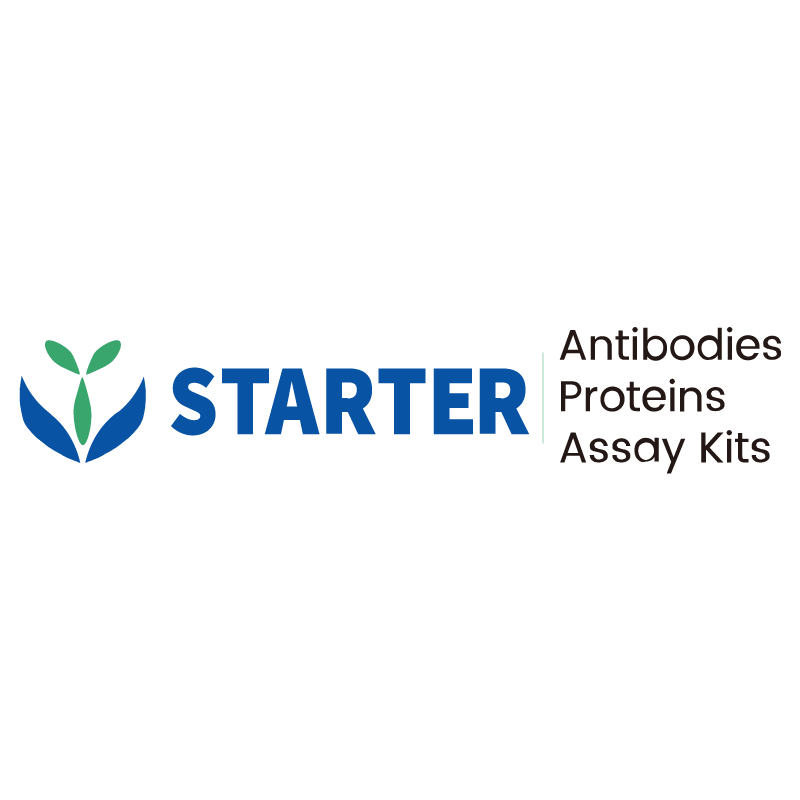WB result of CD19 Recombinant Rabbit mAb
Primary antibody: CD19 Recombinant Rabbit mAb at 1/1000 dilution
Lane 1: CTLL-2 whole cell lysate 20 µg
Lane 2: A20 whole cell lysate 20 µg
Lane 3: mouse spleen lysate 20 µg
Negative control: CTLL-2 whole cell lysate
Secondary antibody: Goat Anti-rabbit IgG, (H+L), HRP conjugated at 1/10000 dilution
Predicted MW: 61 kDa
Observed MW: 60-120 kDa
Product Details
Product Details
Product Specification
| Host | Rabbit |
| Antigen | CD19 |
| Synonyms | B-lymphocyte antigen CD19; B-lymphocyte surface antigen B4; Differentiation antigen CD19; T-cell surface antigen Leu-12 |
| Location | Cell membrane |
| Accession | P15391 |
| Clone Number | S-3357 |
| Antibody Type | Recombinant mAb |
| Isotype | IgG |
| Application | WB, IHC-P, ICC, IF |
| Reactivity | Ms |
| Positive Sample | A20, mouse spleen |
| Purification | Protein A |
| Concentration | 0.5 mg/ml |
| Conjugation | Unconjugated |
| Physical Appearance | Liquid |
| Storage Buffer | PBS, 40% Glycerol, 0.05% BSA, 0.03% Proclin 300 |
| Stability & Storage | 12 months from date of receipt / reconstitution, -20 °C as supplied |
Dilution
| application | dilution | species |
| WB | 1:1000-1:2000 | Ms |
| IHC-P | 1:1000 | Ms |
| ICC | 1:100 | Ms |
| IF | 1:500 | Ms |
Background
CD19, also known as B-lymphocyte antigen CD19 or B-Lymphocyte Surface Antigen B4, is a 95 kDa type I transmembrane glycoprotein that belongs to the immunoglobulin superfamily and is encoded by the CD19 gene. It is primarily expressed on all B lineage cells, from early pro-B cells to plasma cells, and plays a crucial role in B cell development, activation, and signaling. As a co-receptor, CD19 enhances signaling through the B cell receptor (BCR) complex, lowering the threshold for B cell activation and promoting B cell proliferation and differentiation. It forms a complex with CD21, CD81, and other proteins, which helps in the recognition of antigens tagged with complement and amplifies BCR signaling. CD19 is also a biomarker for B cell-related diseases and a target for immunotherapies, including monoclonal antibodies and CAR-T cell therapies, due to its consistent expression on B cells and B cell malignancies.
Picture
Picture
Western Blot
Immunohistochemistry
IHC shows positive staining in paraffin-embedded mouse spleen. Anti-CD19 antibody was used at 1/1000 dilution, followed by a HRP Polymer for Mouse & Rabbit IgG (ready to use). Counterstained with hematoxylin. Heat mediated antigen retrieval with Tris/EDTA buffer pH9.0 was performed before commencing with IHC staining protocol.
Negative control: IHC shows negative staining in paraffin-embedded mouse kidney. Anti-CD19 antibody was used at 1/1000 dilution, followed by a HRP Polymer for Mouse & Rabbit IgG (ready to use). Counterstained with hematoxylin. Heat mediated antigen retrieval with Tris/EDTA buffer pH9.0 was performed before commencing with IHC staining protocol.
Immunocytochemistry
ICC shows positive staining in A20 cells. Anti- CD19 antibody was used at 1/100 dilution (Green) and incubated overnight at 4°C. Goat polyclonal Antibody to Rabbit IgG - H&L (Alexa Fluor® 488) was used as secondary antibody at 1/1000 dilution. The cells were fixed with 4% PFA and permeabilized with 0.1% PBS-Triton X-100. Nuclei were counterstained with DAPI (Blue). Counterstain with tubulin (Red).
Immunofluorescence
IF shows positive staining in paraffin-embedded mouse spleen. Anti-CD19 antibody was used at 1/500 dilution (Green) and incubated overnight at 4°C. Goat polyclonal Antibody to Rabbit IgG - H&L (Alexa Fluor® 488) was used as secondary antibody at 1/1000 dilution. Counterstained with DAPI (Blue). Heat mediated antigen retrieval with EDTA buffer pH9.0 was performed before commencing with IF staining protocol.


